Abstract
OBJECTIVE. This study monitors trends in place of death among persons with acquired immunodeficiency syndrome (AIDS) as a measure of health care usage patterns and terminal health care among persons infected with human immunodeficiency virus (HIV). METHODS. Sixteen health departments collected death certificates for 55,186 persons with AIDS whose deaths occurred through 1991. Place of death was categorized as hospital, residence, hospice or nursing home, and other. RESULTS. The percentage of AIDS deaths at hospital facilities decreased from 92% in 1983 to 57% in 1991. In 1988, 23% of deaths occurred at home or in hospices and nursing homes. This trend was more evident among men, Whites, and men who had sex with men; less so among persons with other modes of exposure; and not at all among injecting drug users and children with perinatally acquired AIDS. Place of death varied by geographic location, with the greatest percentage of hospital deaths in the Northeast (91%) and the greatest percentage of at-home deaths in the West (27%). CONCLUSIONS. The percentage of AIDS deaths at home or in hospices and nursing homes has increased since 1983. These trends may reflect changes in hospital use for end-stage HIV infection. Decreasing hospitalization and increasing outpatient services and home care will decrease costs and may allow HIV-infected persons improved social support.
Full text
PDF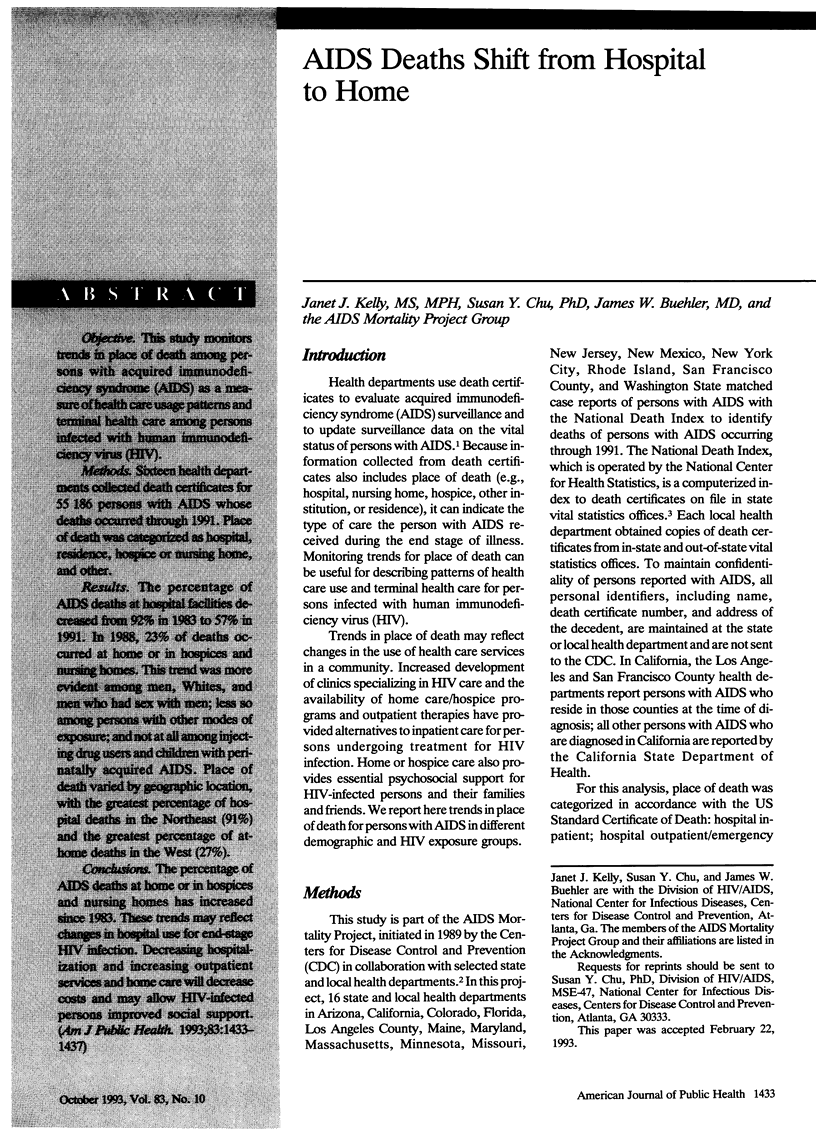
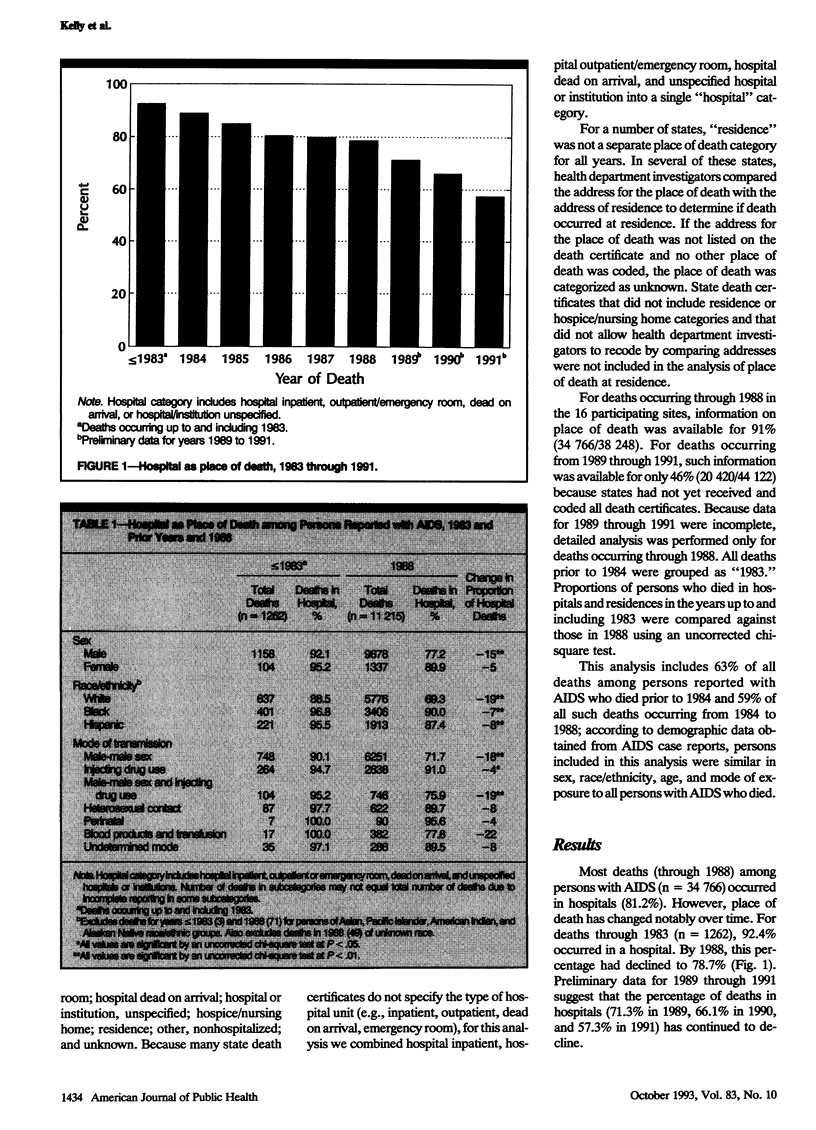
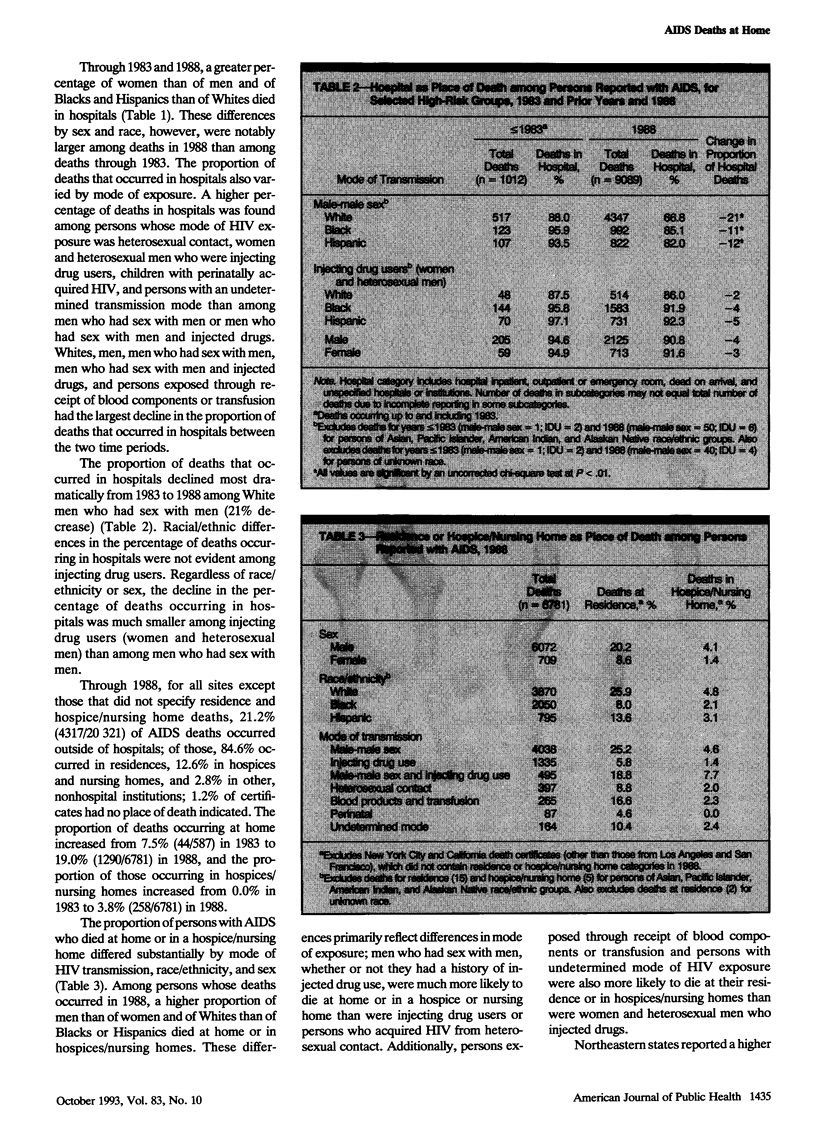
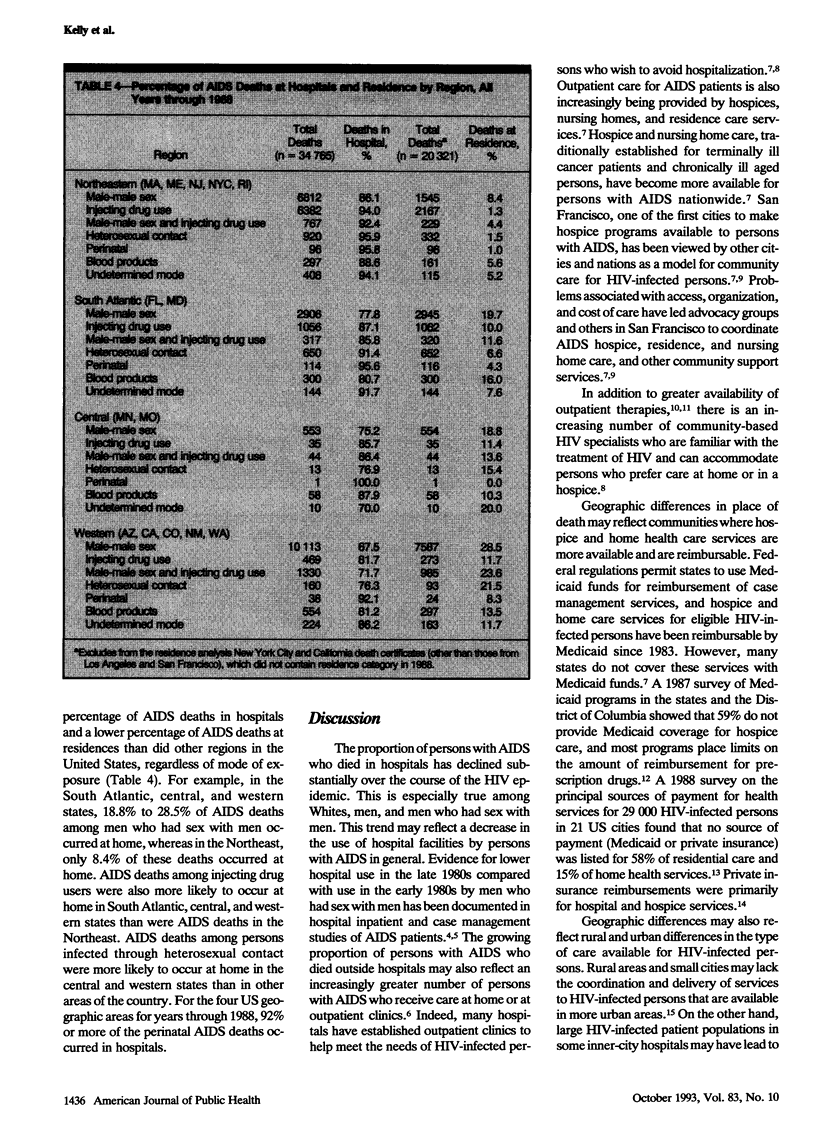
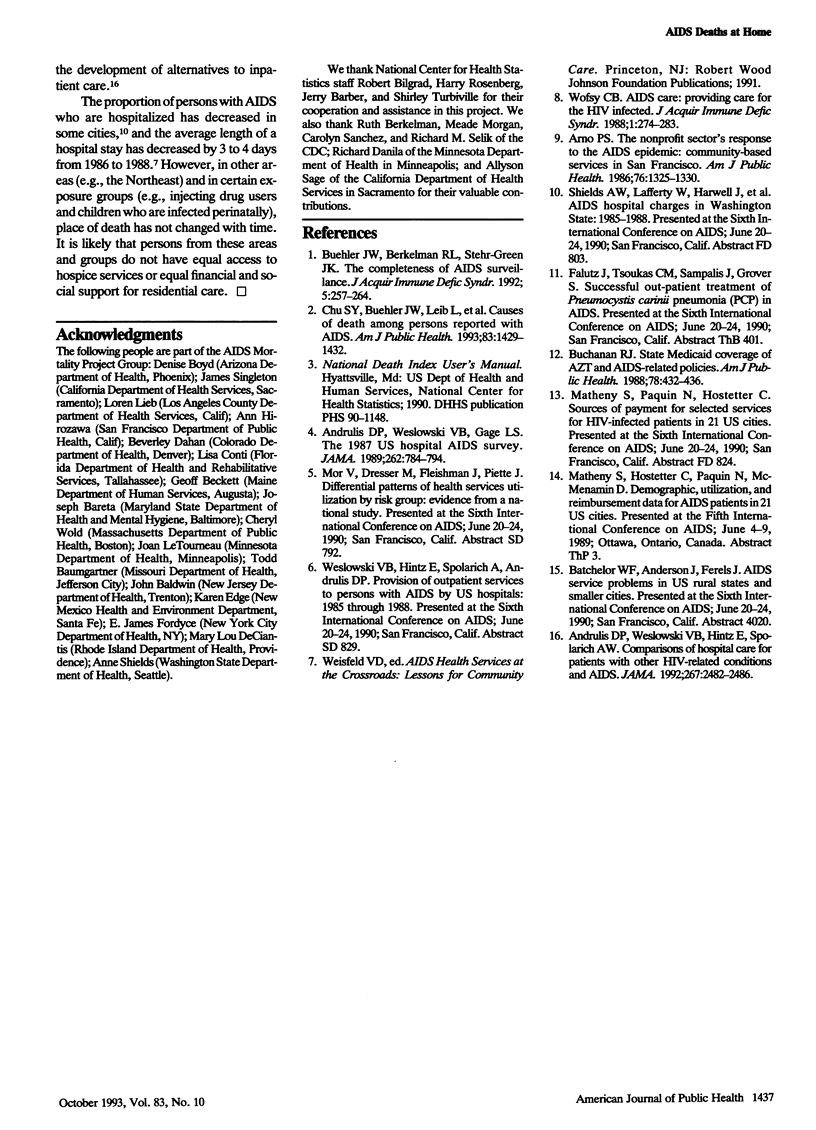
Selected References
These references are in PubMed. This may not be the complete list of references from this article.
- Andrulis D. P., Weslowski V. B., Gage L. S. The 1987 US hospital AIDS survey. JAMA. 1989 Aug 11;262(6):784–794. [PubMed] [Google Scholar]
- Andrulis D. P., Weslowski V. B., Hintz E., Spolarich A. W. Comparisons of hospital care for patients with AIDS and other HIV-related conditions. JAMA. 1992 May 13;267(18):2482–2486. [PubMed] [Google Scholar]
- Arno P. S. The nonprofit sector's response to the AIDS epidemic: community-based services in San Francisco. Am J Public Health. 1986 Nov;76(11):1325–1330. doi: 10.2105/ajph.76.11.1325. [DOI] [PMC free article] [PubMed] [Google Scholar]
- Buchanan R. J. State Medicaid coverage of AZT and AIDS-related policies. Am J Public Health. 1988 Apr;78(4):432–436. doi: 10.2105/ajph.78.4.432. [DOI] [PMC free article] [PubMed] [Google Scholar]
- Buehler J. W., Berkelman R. L., Stehr-Green J. K. The completeness of AIDS surveillance. J Acquir Immune Defic Syndr. 1992;5(3):257–264. [PubMed] [Google Scholar]
- Chu S. Y., Buehler J. W., Lieb L., Beckett G., Conti L., Costa S., Dahan B., Danila R., Fordyce E. J., Hirozawa A. Causes of death among persons reported with AIDS. Am J Public Health. 1993 Oct;83(10):1429–1432. doi: 10.2105/ajph.83.10.1429. [DOI] [PMC free article] [PubMed] [Google Scholar]
- Wofsy C. B. AIDS care: providing care for the HIV infected. J Acquir Immune Defic Syndr. 1988;1(3):274–283. [PubMed] [Google Scholar]


